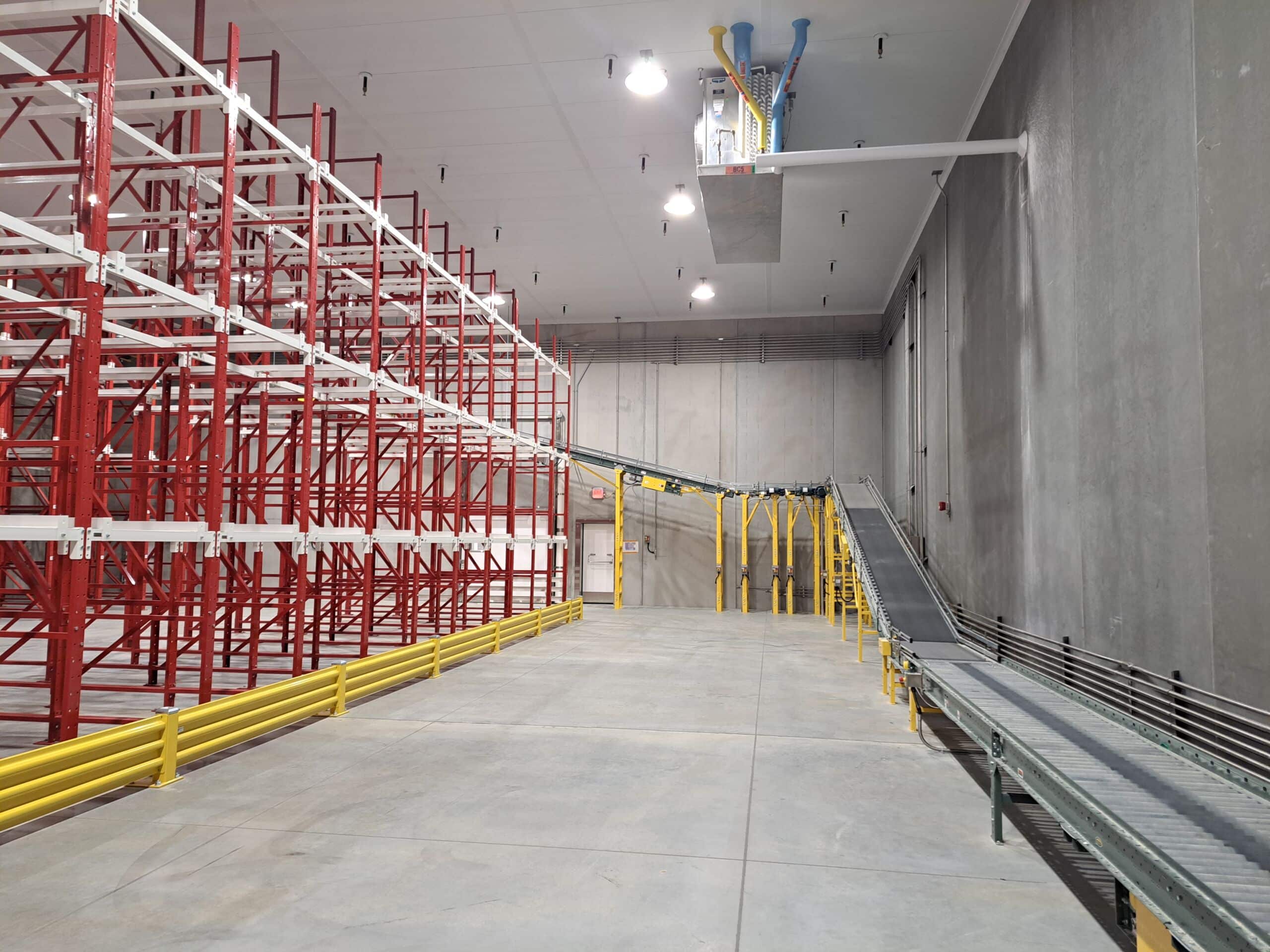For beef processors, automating your workflow through conveyor systems, continuous inkjet printers, and end-of-line packaging helps you improve throughput and quality while ultimately getting product to customers more quickly. But you may be overlooking another area that automation can improve: efficiently storing and retrieving pallets awaiting shipment.
Storage presents its own set of challenges, since the sheer volume of primal cuts or ground beef chubs produced daily quickly exhausts available space and creates a constant scramble for additional capacity. Managing inventory accurately can be problematic. And, manual retrieval and put-away in a dense, cold environment can be time-consuming and physically demanding for human workers.
All of these factors can ultimately impact the quality and freshness of your meat, but there are storage solutions and automation that can help!
1. Warehouse Racking
Warehouse racking provides an economical solution to storing your products. Here are some of the most common ones used in food production:
- Selective racking: Pallets can be stored or two deep, allowing for easy access and for creating many pick facings.
- Drive in drive through racking: Excels at storage density and can be outfitted with pallet shuttles for a through-rack FIFO or FILO system.
- Pushback racking:Ideal for pick facing while increasing density with FILO systems.
- Pallet flow rack: Ideal for queuing up loads in FIFO systems.

2. Pallet Shuttles
Pallet shuttles don’t require as large of an upfront investment as AS/RS, but can also help you improve efficiency as you store and retrieve pallets in your racking system.
Here are a few of their key benefits:
- Maximizes storage density by allowing pallets to be stored deeply within a single racking channel.
- Eliminates the need for forklifts to enter racking, which helps maximize space otherwise needed for aisles.
- Increases efficiency and throughput by eliminating the time and labor required for manual material handling.
- Improves safety and reduces the risk of accidents since forklifts don’t need to operate within racking.
- Reduces damage to racking and products since the shuttles automatically and precisely deliver pallets.
- Provides real-time inventory tracking and reduces errors when linked to warehouse management software.
- Configurable for FIFO and LIFO inventory management.
How Pallet Shuttles Work
- Forklift operator place pallets onto rails or other designated transfer point in front of storage lanes.
- The pallet shuttle transports the pallet to the next available position.
- The process reverses itself for retrieval, with the shuttle receiving details on which pallet to retrieve and deliver to the forklift operator.
Types of Pallet Shuttles
There are three different types of pallet shuttles:
- 1D semi-automated, which move horizontally. These are the most cost-effective type of shuttle and ideal for high volumes of the same SKU in each lane.
- 2D fully automated, which move horizontally and across aisles. These provide more flexibility in accessing different SKUs within the same level.
- 3D fully automated, which move horizontally, across aisles and vertically. These provide the best storage density, throughput and accessing any pallet within your storage system.
3. Automated Storage and Retrieval Systems (AS/RS)
Automated storage and retrieval systems, also known as AS/RS, provide the fullest range of automation to help you save time and space while improving safety.
Here are a few of their key benefits:
- Maximizes vertical storage space through a robust, high-density racking structure that seamlessly handles storage and retrieval with little or no human intervention.
- Improves efficiency and throughput by delivering faster storage and retrieval times.
- Provides real-time inventory tracking and reduces errors when linked to warehouse management software.
- Integrates with product coding and marking systems for seamless data capture.
- Protects product quality by maintaining a desired temperature while minimizing fluctuations when in use.
- Potentially reduces energy costs through helping you store more in a smaller footprint.
- Scalable for future growth as production increases.

How AS/RS Works
- Pallets or cases/units that need to be stored are fed to an induction point.The control system identifies a location and automatically transports it to the designated slot for storage.
- Pallets or cases are retrieved by placing an order and having the system deliver them to the appropriate station.
Types of AS/RS
Depending on the product you need to store, there are several different types of AS/RS: unit-load, which are suitable for larger items like full pallets, and mini-load, for individual cartons or cases.
Request a Free Storage Automation Consultation Today
Whether you want to add AS/RS to a greenfield or retrofit an existing site with pallet shuttles, you need a trusted partner who understands your industry. RMH Systems is one of the few systems integrators specializing in beef processing automation, and the only one who handles your project fully in-house, from layout planning to seamless integration with new or existing systems to aftermarket service.
Request a free consultation with our material handling automation experts today to learn more about how automating your storage can better position you for growth today – and in the future!